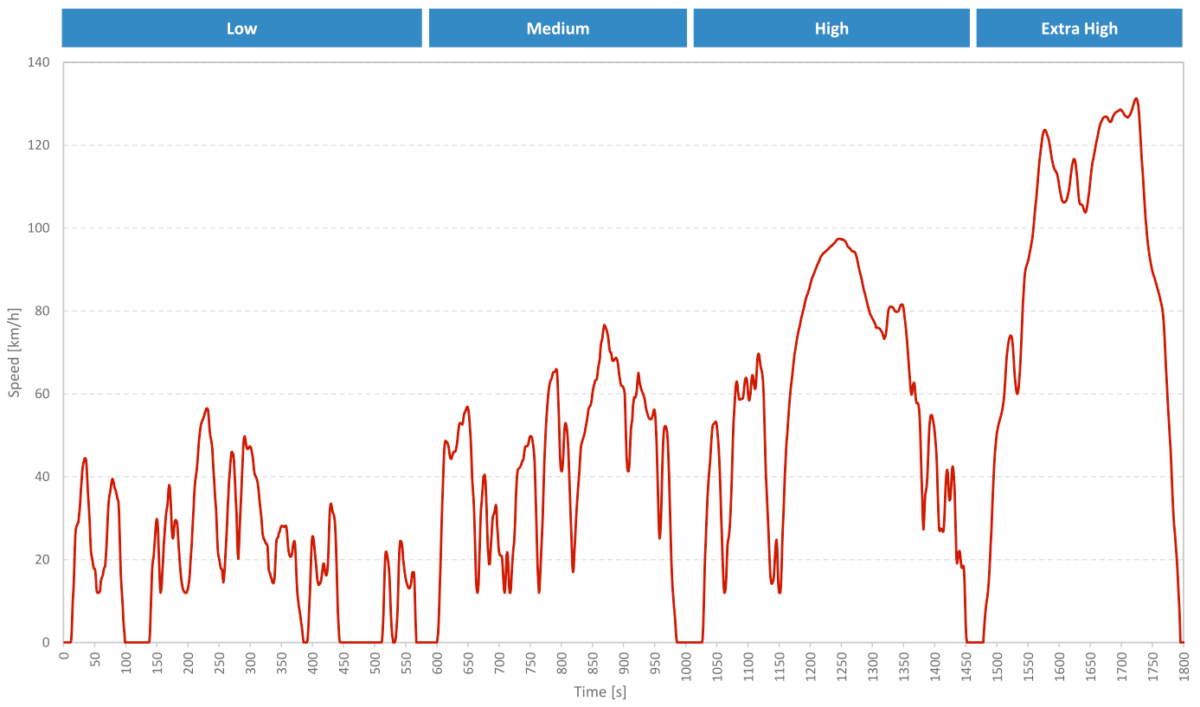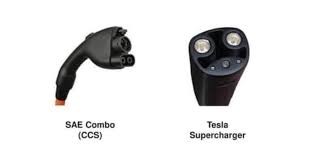|
|
|
someone tell me why Leaf 62kWh does 385km WLTP vs BYD 60kWh at 450km WLTP
Batman:
someone tell me why Leaf 62kWh does 385km WLTP vs BYD 60kWh at 450km WLTP
More efficient motor?
More efficient shape/aero?
Was also going to say weight, but the BYD is heavier.
Batman:
someone tell me why Leaf 62kWh does 385km WLTP vs BYD 60kWh at 450km WLTP
Assume you are talking atto3
Should also not with regards to the leaf e+, the 385km rated range is for the high trim version. A low trim version with 16" wheels (not sold new in NZ) is rated at 398km.
As to the reasons for the higher rated efficiency, there are two possibilities:
Result of the last point is that some cars do better in the real world than others. The ev-database.org listing for the leaf e+quotes 340km or real range, where they quote 340km of real range for the leaf.
As to why this is, the WLTP cycle isn't super representative of real world use, especially for highway use which is basically the only place where range would be an issue on a longer range car in NZ. Average WLTP cycle speed is 46.5km/h, A/C and Heater is not used ETC.
You can read more below:

Should also note that the NMC battery (while they have been holding up pritty well for 40kWh & 62kWh leaf's), will degrade faster than LFP battery in the atto3.
Big international story is that Tesla and Ford have cut a deal that allows ford e-tron, f-150 lightning & transit to use the entire USA and Canada supercharging network.
https://www.caranddriver.com/news/a44016347/ford-tesla-ev-charging-opinion/
Both companies had seen a bump in share price on the news.
In the USA, it seems that the Supercharger network is a massive selling point as other charging networks seem to have significant reliability & capacity issues. We are kinda spoilt here with the volume of non-brand-specific charging available.
Initially this will be done via an adapter that ford will sell to allow the North America supercharger plugs to be connect to the CCS1 ports on their cars.

The interesting bit is that ford has said they are going to start using the Tesla charge port (the one on the right in the above image) on their cars from 2025. Unclear if this is addition to CCS1, or instead of it.
This is a big deal, because it marks the start of a plug standard war. Previously Teala was the only brand to use their plug (which they have dubbed the NACS / "North American Charging standard", based on their brands dominance in the space).
The fast charging plug standard war (CCS1 vs CHAdeMO), was largely over in the USA / Canada, with brands like Nissan (one of the historically strongest proponents of CHAdeMO) & Toyota ditching CHAdeMO in favor of CCS on their latest models like Ariya & BZ4X.
While Tesla have been sticking with their own plug in north america, they were working with everybody else going the CCS1 route, by selling adapters with their cars allowing every recent tesla to charge at CCS1 chargers, and installing "magic dock" adapters at the handful of superchargers that they have been willing to open up to any brand of car.
But with ford (USA's biggest auto seller, and third biggest BEV seller) jumping in the NACS camp, it is all back on again.
Is the Tesla plug+socket system actually better than CCS1, for some reasonable value of "better"?
Or is this Ford admitting that in the USA market, Tesla is the de facto standard-setting 400kg gorilla?
The thing is, the Mach-E and F150 have their charging ports on the front left and Teslas all use left rear (not sure about Cybertruk but assume it’s the same). The leads at Tesla Superchargers are short because they only have to reach to the left rear when the cars are reversed in. That means when a Ford driver arrives to charge they will need to go nose in, in the bay adjacent to the correct one. For Tesla owners who are probably already peeved that “their superchargers” are going to be used by other brands, this could lead to conflict. Not great in a country where you are allowed to carry guns.
I guess the way around it is for Ford to either move their charge port to the front right or left rear (thus proving who is wearing the pants in the relationship), or Tesla make the SC leads longer (unlikely).
Ford could ‘do a Taycan’ and put a charge port on each side (NACS on the FR, CCS on the FL).
Edit: corrected car type.
“We’ve arranged a society based on science and technology, in which nobody understands anything about science technology. Carl Sagan 1996
PolicyGuy:
Is the Tesla plug+socket system actually better than CCS1, for some reasonable value of "better"?
Or is this Ford admitting that in the USA market, Tesla is the de facto standard-setting 400kg gorilla?
It is close enough that people argue about which is better. I think they are both fast enough and compact enough to get the job done, so either would be fine.
There is no argument that the Tesla NACS is smaller & lighter than CCS1. Plug itself would be cheaper, but the car would need some more switching stuff behind it as it is running AC & DC over the same pins.
CCS (both 1 & 2) maxes out at 350kW. (Currently in service). I think this is envisioned as enough for light vehicles, and that ultimately the likes of large truck's, boats etc will get their own chunky dedicated Megawatt + plug.
NACS's fastest chargers are 250kW (and don't support 800V, so cars like the Porsche Taycan would be limited to 50kW in standard configuration & 150kW with higher power DC-DC option). Apparently, the standard can potentially do 1MW & 800V, but none are yet in service.
On the last part, It is the supercharger access that is the 400kg gorilla. Tesla's supercharger network in North America is so much better than the competing charge networks, that it is a major selling point for anybody going road tripping. As such, automakers stand to gain substantial sales by cutting a deal with Tesla.
Tesla want's their NACS to become an accepted charging standard so they can get government funding. I bet ford installing NACS ports was part of the terms of the deal, to legitimise NACS as a charging standard so they can apply for government funding for their chargers etc.
What is potentially concerning for the USA / Canada is that this move increases tesla's dominance in the charging space. Probably more to do with who Tesla lets in that the physical connector. Tesla's supercharger network is already dominant, and the addition of Ford (and Aptera when they start delivering cars) with full access will provide tesla with more funds to further expand the network. This will put any car brands that don't agree to tesla's terms to be granted supercharger access will be at a competitive disadvantage. I Imagine Ford & Aptera got OK deals as first mover's, but that Tesla will charge big $$ to any further brands that want to join.
And the other big Tesla news
https://cleantechnica.com/2023/05/28/tesla-100-gb-data-bomb-turned-over-to-handelsblatt/
"Handelsblatt (paywall), one of Germany’s top news organizations, says it has received over 100 GB of data from one or more Tesla employees. It broke the story with this headline: “‘My autopilot almost killed me’: Tesla files cast doubt on Elon Musk’s promises.” Those reports suggest that Tesla failed to adequately protect data from customers, employees, and business partners and has received thousands of customer complaints regarding the carmaker’s driver assistance system, according to The Guardian.
That’s not all. Handelsbatt says that included in the data are tables containing more than 100,000 names of former and current employees, including the social security number of CEO Elon Musk, along with private email addresses, phone numbers, salaries of employees, bank details of customers, and secret details from production."
A good (but lengthy) technical overview of the charge connector Ford/Tesla partnership.
The beat up in the video about charge door size for CCS seems to be disproved by the charge port on the Model 3/Y doesn’t it? And I’m guessing the MIC/G Teslas have the 3 copper cables?
NACS does appear to be superior, but because of where it’s come from, the EU will definitely legislate against it! (/s)
Looking at the comments below the video, it would appear the V4 SCs have taken the positioning into consideration, placing the charger in the centre rather than to one side, and have a longer cable. But as pointed out that still leaves 12000 SCs that aren’t as ideal.
“We’ve arranged a society based on science and technology, in which nobody understands anything about science technology. Carl Sagan 1996
For non-NA countries the NACS isn't a good fit in its current design due to it not supporting three phase power. From what I understand, in North America they get their 11kW by cranking the amps on a single phase circuit while outside of the North America we split it across three phases. Although I haven't had both side by side, the CCS1 connector looks bulkier to handle than the CCS2 connector that we use.
Looking to buy a Tesla? Use my referral link and we both get credits
Obraik:
Although I haven't had both side by side, the CCS1 connector looks bulkier to handle than the CCS2 connector that we use.
I would've thought it was slightly smaller since the AC part is a type-1, and the DC part is the same. But otherwise I agree - CCS1 doesn't make a lot of sense outside NA. ... And that's probably a big reason why they don't do it.
iPad Pro 11" + iPhone 15 Pro Max + 2degrees 4tw!
These comments are my own and do not represent the opinions of 2degrees.
CCS1 has the locking clip on the plug whereas CCS2 has it within the port of the car, which gives CCS1 a bit of a hump on top to house the locking mechanism.
Looking to buy a Tesla? Use my referral link and we both get credits
|
|
|
